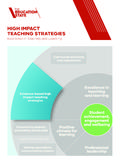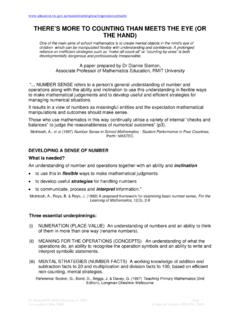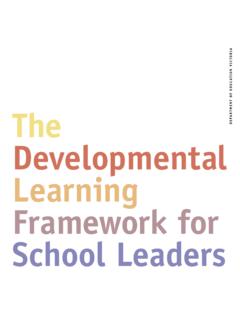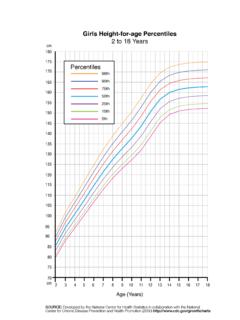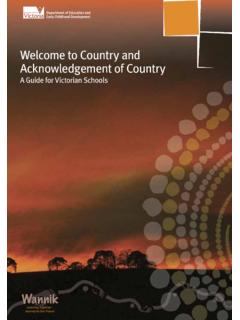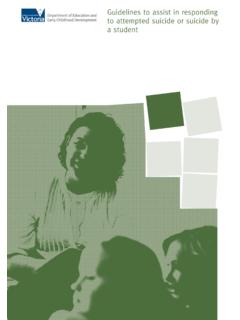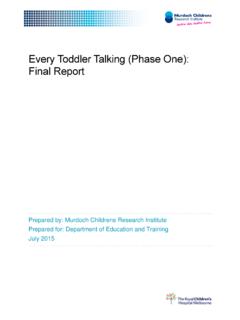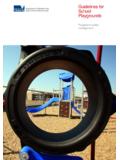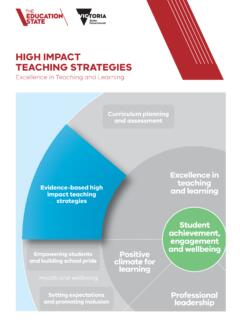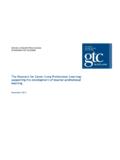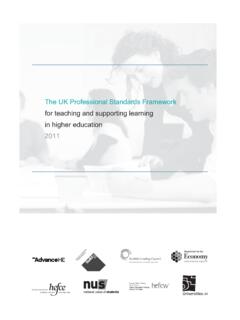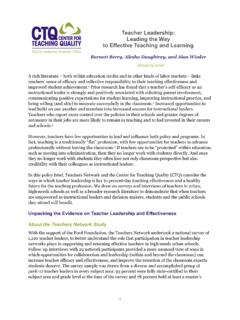Transcription of HIGH IMPACT TEACHING STRATEGIES
1 1 | HIGH IMPACT TEACHING STRATEGIESE xcellence in TEACHING and LearningCurriculum planning and assessmentEvaluating IMPACT on learningParents and carers as partnersGlobal citizenshipNetworks with schools, services and agenciesBuildingcommunitiesBuilding practiceexcellencePositive climate for learningProfessionalleadershipCommunity engagement in learningStudent achievement, engagement and wellbeingEmpowering students and building school prideHealth and wellbeingSetting expectations and promoting inclusionIntellectual engagement and self awarenessInstructional and shared leadershipStrategic resource managementVision values and cultureBuilding leadership teamsExcellence in TEACHING and learningEvidence-based high IMPACT TEACHING strategies2 | High IMPACT TEACHING StrategiesPublished by the Department of Education and Training Melbourne June 2017 State of Victoria (Department of Education and Training) 2017 The copyright in this document is owned by the State of Victoria (Department of Education and Training), or in the case of some materials, by third parties (third party materials).
2 No part may be reproduced by any process except in accordance with the provisions of the Copyright Act 1968, the National Education Access Licence for Schools (NEALS) (see below) or with educational institution situated in Australia which is not conducted for profit, or a body responsible for administering such an institution may copy and communicate the materials, other than third party materials, for the educational purposes of the by the Department of Education and Training, 2 Treasury Place, East Melbourne, Victoria, 3002. ISBN: 978-0-7594-0820-32 | High IMPACT TEACHING StrategiesHigh IMPACT TEACHING STRATEGIES | 3 ContentsDeputy Secretary s Message 4 What are the High IMPACT TEACHING STRATEGIES (HITS)? 5 This resource offers: 5 What is effect size? 5 Who are the HITS for? 6 Teachers 6 professional learning communities 6 School leaders 6 Using the HITS 7 Providing feedback 7 HITS overview table 8 Setting Goals 10 Structuring Lessons 12 Explicit TEACHING 14 Worked Examples 16 Collaborative learning 18 Multiple Exposures 20 Questioning 22 Feedback 24 Metacognitive STRATEGIES 26 Differentiated TEACHING 284 | High IMPACT TEACHING StrategiesWhen teachers work together to improve their practice, students learn more.
3 This simple yet powerful idea is at the heart of effective schools. Collaboration builds collective responsibility for constantly improving TEACHING practice and so student learning . The challenge for teachers and schools is to develop a shared understanding of what excellent practice looks like. While it will not look exactly the same in every classroom, there are some instructional practices that evidence suggests work well in High IMPACT TEACHING STRATEGIES (HITS) have been brought together here to support the thousands of increasingly collaborative and evidence-based conversations taking place between teachers in schools each day. These STRATEGIES provide teachers and teams with opportunities to observe, reflect on and improve a range of fundamental classroom practices. The HITS are not intended to replace other TEACHING STRATEGIES teachers might already use with success.
4 Instead, they will add to the repertoire of effective STRATEGIES that teachers can apply to the wide variety of learning needs that students present with each Secretary s MessageSince 2016, school leadership teams have drawn on the Framework for Improving Student Outcomes (FISO) to drive strategic and annual planning at the whole school level. By clearly and insistently directing that planning toward student learning , FISO is helping to identify and address persistent challenges for individual teachers and to build collective teacher efficacy. The HITS provide a clear link between the Evidence Based High IMPACT TEACHING STRATEGIES dimension of FISO and classroom practice. Teachers can plan and adjust their practice in response to one or more of the HITS and monitor the IMPACT on student engagement and learning outcomes. This resource provides a focus for the professional development efforts of individual teachers, which can be linked to the goals and feedback components of their own Performance and Development Plans.
5 I encourage teachers in all schools to use the HITS to challenge themselves and their colleagues as part of our collective and ongoing commitment to improving learning outcomes for every Victorian ArmstrongDeputy Secretary, Regional Services GroupCurriculum planning and assessmentEvidence-based high IMPACT TEACHING strategiesEvaluating IMPACT on learningParents and carers as partnersGlobal citizenshipNetworks with schools, services and agenciesBuildingcommunitiesBuilding practiceexcellenceExcellence in TEACHING and learningPositive climate for learningProfessionalleadershipCommunity engagement in learningStudent achievement, engagement and wellbeingEmpowering students and building school prideHealth and wellbeingSetting expectations and promoting inclusionIntellectual engagement and self awarenessInstructional and shared leadershipStrategic resource managementVision values and cultureBuilding leadership teamsHigh IMPACT TEACHING STRATEGIES | 5 What are the High IMPACT TEACHING STRATEGIES (HITS)?
6 The HITS are 10 instructional practices that reliably increase student learning wherever they are applied. They emerge from the findings of tens of thousands of studies of what has worked in classrooms across Australia and the world. International experts such as John Hattie and Robert Marzano have synthesised these studies and ranked hundreds of TEACHING STRATEGIES by the contribution they make to student learning [see What is effect size box]. The HITS sit at the top of these rankings. Some teachers will ask, But will they work in my classroom, with my students? Only the professional judgement of teachers, both individual and collective, can answer that question. For any concept or skill that students need to learn, using a HITS to teach it increases the chances that students will learn it, compared to using other STRATEGIES . But they are reliable, not infallible. Knowing their students and how they learn, teachers are well-placed to judge whether a HITS or another strategy is the best choice to teach that concept or skill.
7 The HITS will not be new to most teachers. The purpose of this resource is to bring them together in one place, along with practical examples of how other Victorian teachers are using them successfully. The HITS alone do not constitute a complete framework for professional practice. They are part of the full set of instructional practices that contribute to a comprehensive pedagogical model [see diagram below].What is effect size?Effect size is a measure of the contribution an education intervention makes to student learning . It allows us to move beyond questions about whether an intervention worked or not, to questions about how well an intervention worked in varying contexts. This evidence supports a more scientific and rigorous approach to building professional knowledge. Effect size is an important tool for reporting and interpreting the effectiveness of specific TEACHING practices and interventions (Education Endowment Foundation, 2012).
8 Highly regarded educational researchers and resources, including Hattie, Lemov, Marzano, and the TEACHING and learning Toolkit Australia (Education Endowment Foundation, 2015), have used slightly different methodologies to measure effect size and identify HITS. Despite their varied approaches and terminology, all agree on a number of powerful STRATEGIES . These STRATEGIES are reflected in this HITS resource and the AITSL Standards and the Classroom Practice resource offers: accessible, succinct guidance on using high IMPACT , evidence-based STRATEGIES bite sized insights that enable you to focus on one or more HITS, and to progressively build expertise, and scalable possibilities, allowing individual teachers, professional learning communities , and whole schools, to set goals and actions centred on the ModelInstructional PracticesHITS6 | High IMPACT TEACHING StrategiesWho are the HITS for?
9 TeachersThe HITS will support teachers at every career stage. Each strategy is accompanied by two examples. The examples show teachers how to adapt the HITS to different learning goals and needs, and to respond to different school beginning teachers, the HITS are a bank of reliable instructional practices they can use with confidence. For experienced teachers, this resource can add to their understanding of the HITS they are already using, and suggest new ways to use them in the teachers highly familiar with the HITS will benefit from this resource as they pursue mastery of these valuable instructional practices through practice, reflection, shared observation and learning communitiesConfined to individual teachers and classrooms, the HITS will not contribute to the collective efficacy that marks out high-performing schools. In these schools, teachers come together to pool their knowledge of effective TEACHING into a collaborative approach to planning, implementing and monitoring TEACHING using the HITS to build their pool of knowledge, these professional learning communities can anchor their interventions in evidence-based practices and so increase the likelihood of those interventions being effective.
10 School leadersFor school leaders the HITS are a professional learning opportunity. The HITS are linked to each other, and connected to a broader repertoire of teacher skills and knowledge. They can be connected to collaboration between teachers in professional learning communities and integrated into classroom and school planning around curriculum, instruction and the interdependencies and developing a whole of practice approach is complex work for teachers which requires classroom embedded professional learning and a supportive high performance learning culture in a school. A sustained focus on HITS can be supported by coaching, modeling, observation and feedback to ensure widespread use of successful TEACHING learning using the FISO Inquiry CycleSetting goals Multipleexposures QuestioningDifferentiated teachingWorked examples Structuringlessons?Metacognitivestrategi esCollaborative learning Explicit TEACHING FeedbackAssessment for, as, of learning (Data informs instruction)Curriculum content knowledgeAuthentic andrich learning tasks Teacher learning using the FISO Inquiry CycleSetting goals Multipleexposures QuestioningDifferentiated teachingWorked examples Structuringlessons?
